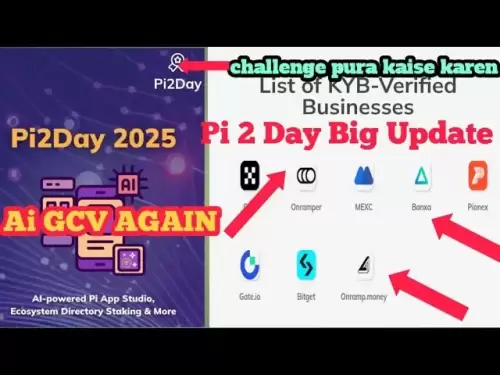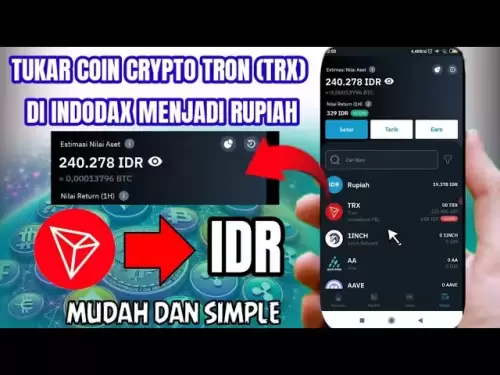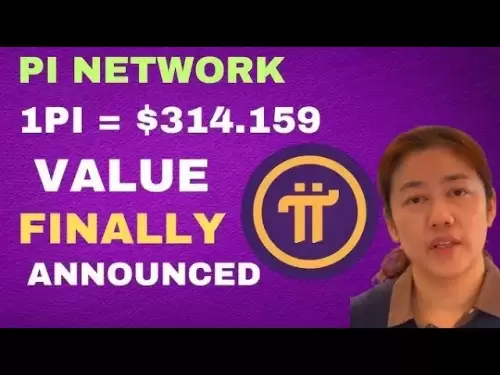-
 Bitcoin
Bitcoin $107,725.9156
0.27% -
 Ethereum
Ethereum $2,481.6786
1.84% -
 Tether USDt
Tether USDt $1.0003
0.01% -
 XRP
XRP $2.2154
1.26% -
 BNB
BNB $658.2447
1.42% -
 Solana
Solana $157.2028
4.24% -
 USDC
USDC $1.0000
0.02% -
 TRON
TRON $0.2788
0.91% -
 Dogecoin
Dogecoin $0.1655
1.00% -
 Cardano
Cardano $0.5714
2.67% -
 Hyperliquid
Hyperliquid $40.6187
6.30% -
 Bitcoin Cash
Bitcoin Cash $519.8117
5.84% -
 Sui
Sui $2.8338
0.59% -
 Chainlink
Chainlink $13.4150
0.60% -
 UNUS SED LEO
UNUS SED LEO $9.1205
-0.54% -
 Avalanche
Avalanche $18.0666
0.85% -
 Stellar
Stellar $0.2363
-0.46% -
 Toncoin
Toncoin $2.9550
2.57% -
 Shiba Inu
Shiba Inu $0.0...01151
-0.15% -
 Litecoin
Litecoin $86.2252
-0.57% -
 Hedera
Hedera $0.1498
1.51% -
 Monero
Monero $318.0620
3.18% -
 Polkadot
Polkadot $3.4174
-0.02% -
 Dai
Dai $1.0000
0.02% -
 Bitget Token
Bitget Token $4.5444
-1.05% -
 Ethena USDe
Ethena USDe $1.0003
0.00% -
 Uniswap
Uniswap $7.1773
-0.53% -
 Pepe
Pepe $0.0...09916
3.19% -
 Aave
Aave $274.7399
0.32% -
 Pi
Pi $0.5136
-2.06%
How to design an efficient smart contract in blockchain development?
Secure, efficient smart contracts necessitate rigorous auditing, gas optimization via efficient data types and code structure, and a modular design for maintainability, all while mitigating known vulnerabilities.
Mar 14, 2025 at 02:41 am
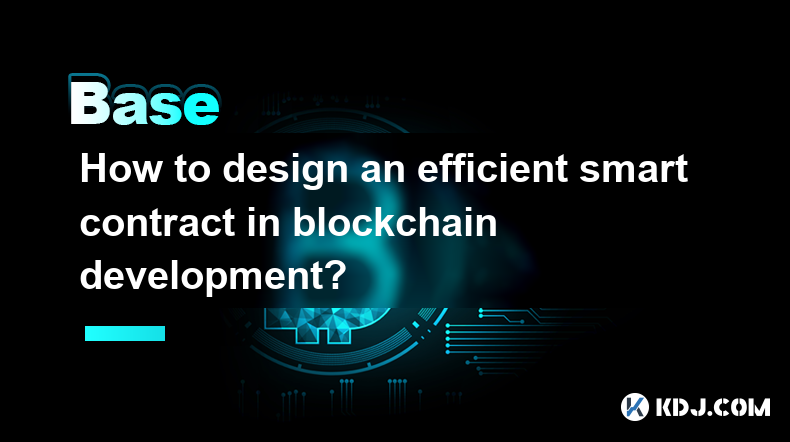
Key Points:
- Understanding Solidity and its limitations is crucial for efficient smart contract design.
- Prioritizing security through rigorous auditing and testing is paramount.
- Optimizing gas usage involves careful code structuring and data type selection.
- Modular design promotes reusability and maintainability.
- Consideration of potential vulnerabilities and attack vectors is essential.
How to Design an Efficient Smart Contract in Blockchain Development?
Designing efficient smart contracts requires a multifaceted approach, balancing functionality, security, and cost-effectiveness. This involves careful consideration of several key aspects throughout the development lifecycle. Ignoring any of these can lead to vulnerabilities, high gas costs, and ultimately, a failed deployment.
Choosing the Right Language and Environment:
Solidity remains the dominant language for Ethereum smart contract development. Understanding its nuances, including its limitations in terms of error handling and dynamic memory management, is crucial. Choosing the right development environment, such as Remix or Truffle, significantly impacts the ease of development and testing. Consider the tools' features and community support before making a decision.
Prioritizing Security:
Security is paramount. Smart contracts, once deployed, are immutable. A vulnerability can lead to irreversible loss of funds. Thorough auditing by experienced security professionals is essential before deploying to mainnet. Formal verification techniques, while more complex, offer a higher level of assurance. Rigorous testing, including unit tests, integration tests, and fuzzing, should be an integral part of the development process.
Optimizing Gas Usage:
Gas optimization directly impacts the cost of deploying and interacting with the smart contract. Careful code structuring is vital. For instance, using more efficient data types, such as uint256 instead of uint, can significantly reduce gas consumption. Avoiding unnecessary computations and loops, and employing efficient storage patterns, are also key strategies. Libraries can provide pre-optimized functions, reducing the need to write custom code.
Modular Design for Maintainability and Reusability:
Modular design breaks down complex contracts into smaller, reusable components. This improves maintainability, making it easier to update or debug specific parts without affecting the entire system. It also promotes code reusability, saving development time and effort across projects. Well-defined interfaces between modules ensure clear communication and reduce the risk of unexpected interactions.
Handling Events and Logging:
Efficient logging is crucial for debugging and monitoring. Smart contracts can emit events, which are recorded on the blockchain and can be used to track the state changes. Careful selection of which events to log is important to balance detailed information with gas efficiency. Overly verbose logging can significantly increase gas costs.
Data Structures and Storage:
Choosing the right data structures significantly impacts efficiency. Arrays and mappings have different gas costs associated with their operations. Understanding the trade-offs between different data structures and choosing the most appropriate one for the specific use case is essential. Efficient storage patterns, such as using storage slots effectively, can also minimize gas usage.
Error Handling and Fallback Functions:
Robust error handling is crucial to prevent unexpected behavior. Smart contracts should handle potential errors gracefully, such as reverting transactions in case of invalid inputs. A well-defined fallback function handles unexpected calls, preventing the contract from entering an unpredictable state.
Testing and Deployment:
Comprehensive testing on test networks is essential before deployment to the mainnet. This allows for identifying and resolving bugs without incurring real financial costs. Deploying to a test network mirrors the mainnet environment, allowing for a realistic simulation. Gradually increasing the complexity of tests helps uncover subtle issues.
Understanding and Mitigating Vulnerabilities:
Common vulnerabilities like reentrancy attacks, arithmetic overflows, and denial-of-service (DoS) attacks must be proactively addressed. Using secure coding practices and employing established security patterns can help mitigate these risks. Regular security audits help identify and fix potential vulnerabilities before they can be exploited.
Common Questions:
Q: What are the most common mistakes in smart contract development?
A: Common mistakes include insufficient testing, neglecting security audits, inefficient gas usage due to poor coding practices, and overlooking potential vulnerabilities like reentrancy or arithmetic overflows.
Q: How can I reduce gas costs in my smart contract?
A: Reduce gas costs by using efficient data types, optimizing loops and computations, employing efficient storage patterns, and using pre-compiled contracts or libraries whenever possible.
Q: What are the best practices for securing a smart contract?
A: Best practices include rigorous testing, formal verification, independent security audits, and adhering to secure coding practices to prevent common vulnerabilities like reentrancy and arithmetic overflows.
Q: What tools and technologies are helpful for smart contract development?
A: Helpful tools include Solidity compiler, Remix IDE, Truffle framework, Hardhat framework, and various testing frameworks. Security auditing tools are also crucial.
Q: How do I choose the right data structure for my smart contract?
A: The choice depends on the specific use case. Consider factors such as read/write frequency, data size, and gas costs associated with different operations for arrays, mappings, and structs.
Disclaimer:info@kdj.com
The information provided is not trading advice. kdj.com does not assume any responsibility for any investments made based on the information provided in this article. Cryptocurrencies are highly volatile and it is highly recommended that you invest with caution after thorough research!
If you believe that the content used on this website infringes your copyright, please contact us immediately (info@kdj.com) and we will delete it promptly.
- Coinbase, Altcoins, and Listings: What's the Buzz?
- 2025-07-01 00:30:11
- Chainlink's Bullish Signals: Investors Bet on Long-Term Value
- 2025-07-01 00:50:12
- Bybit, Kraken, and Tokenized Stocks: A New Era for Trading?
- 2025-07-01 00:30:11
- MicroStrategy, S&P 500, and Crypto News: A Wild Ride for Bitcoin and Beyond
- 2025-07-01 00:55:11
- Week Review: Neo Updates, Crypto Market Movers, and the Stablecoin Evolution (June 23-29)
- 2025-07-01 01:00:12
- Crypto.com & dYdX: Derivative Trading Revolutionized for Everyone
- 2025-07-01 00:35:12
Related knowledge
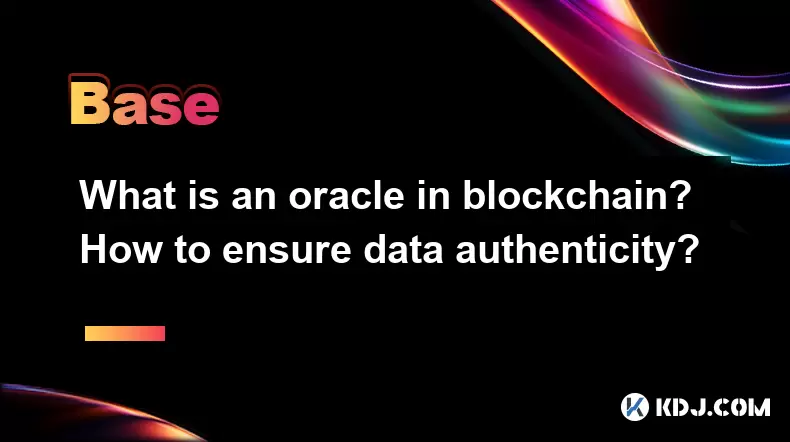
What is an oracle in blockchain? How to ensure data authenticity?
Jun 19,2025 at 08:49pm
Understanding the Role of an Oracle in BlockchainIn the context of blockchain technology, an oracle serves as a bridge between the blockchain and external data sources. While blockchains are inherently secure and decentralized, they cannot access real-world information on their own. Oracles enable smart contracts to interact with off-chain data such as ...
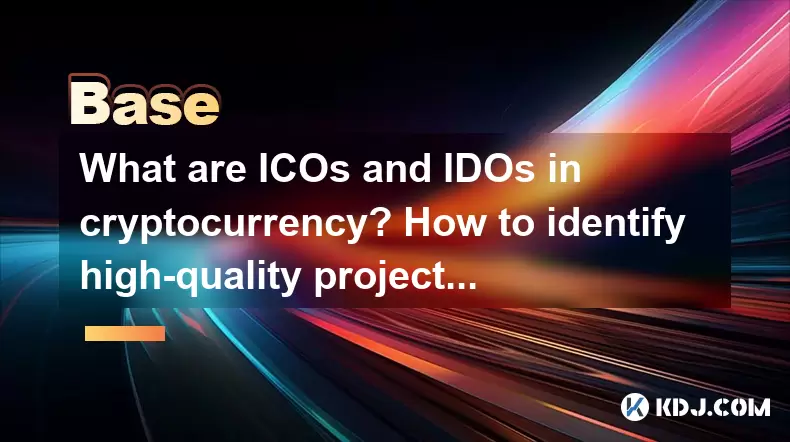
What are ICOs and IDOs in cryptocurrency? How to identify high-quality projects?
Jun 22,2025 at 11:49am
Understanding ICOs in CryptocurrencyInitial Coin Offerings (ICOs) are fundraising mechanisms used by cryptocurrency startups to raise capital for their projects. In an ICO, a company creates and sells its own tokens to investors in exchange for established cryptocurrencies like Bitcoin or Ethereum. The process typically involves the release of a whitepa...
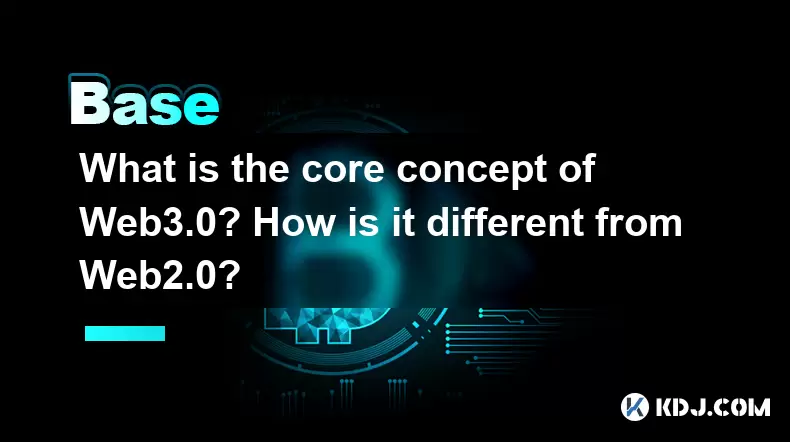
What is the core concept of Web3.0? How is it different from Web2.0?
Jun 21,2025 at 05:56pm
Decentralization as the Foundation of Web3.0The core concept of Web3.0 revolves around decentralization, which fundamentally challenges the centralized architecture of Web2.0. In Web3.0, control and ownership are distributed across a network rather than being held by a central authority or corporation. This is achieved primarily through blockchain techn...
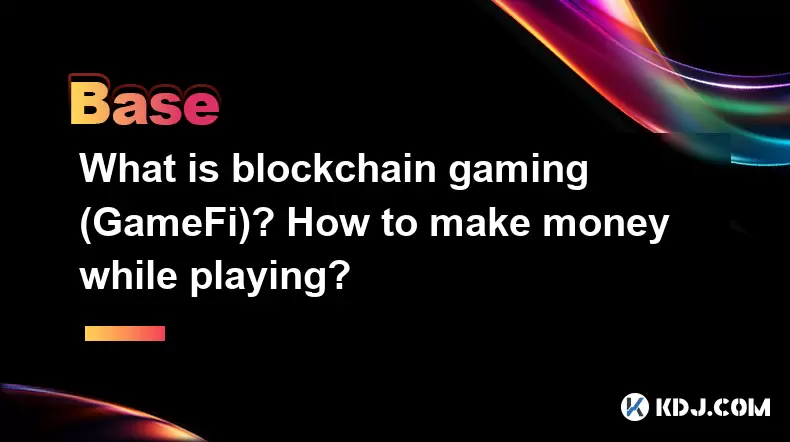
What is blockchain gaming (GameFi)? How to make money while playing?
Jun 20,2025 at 07:56am
Understanding Blockchain Gaming (GameFi)Blockchain gaming, often referred to as GameFi, is a fusion of blockchain technology and video games. It enables players to own in-game assets through non-fungible tokens (NFTs) and earn rewards via cryptocurrencies or token-based systems. Unlike traditional games where items are controlled by centralized develope...
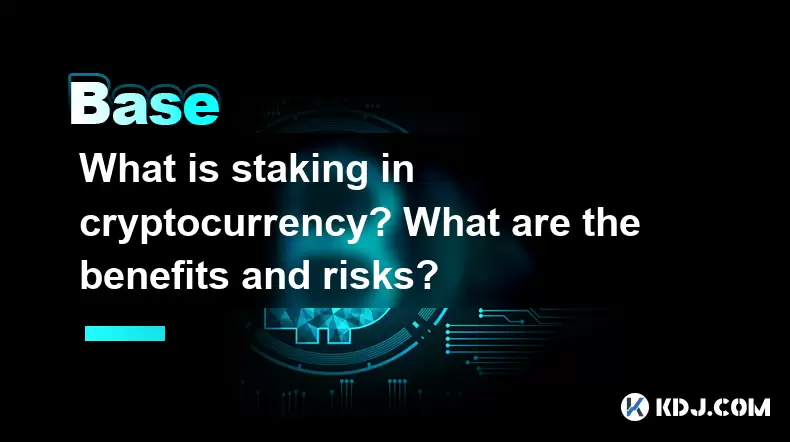
What is staking in cryptocurrency? What are the benefits and risks?
Jun 22,2025 at 10:01am
Understanding the Concept of Staking in CryptocurrencyStaking in cryptocurrency refers to the process of actively participating in transaction validation on a blockchain network that uses a Proof-of-Stake (PoS) consensus mechanism. Instead of miners competing to solve complex mathematical puzzles as in Proof-of-Work systems like Bitcoin, PoS blockchains...
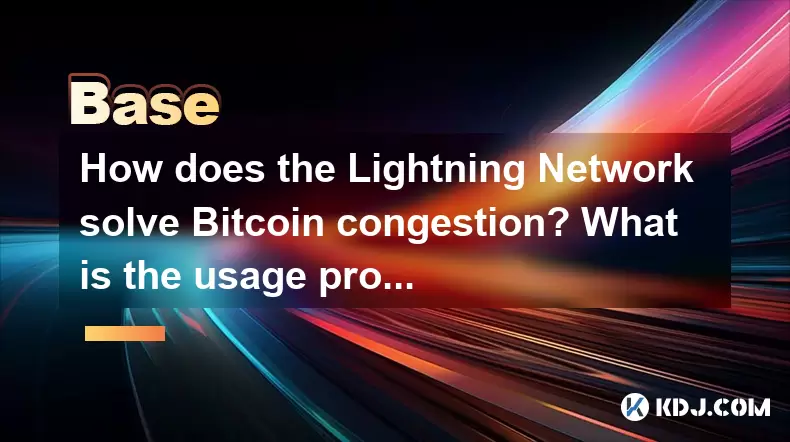
How does the Lightning Network solve Bitcoin congestion? What is the usage process?
Jun 23,2025 at 06:21pm
Understanding Bitcoin Network CongestionBitcoin, as a decentralized digital currency, operates on a blockchain that records every transaction in a public ledger. Each block has a limited size, typically 1 megabyte, which allows for only a certain number of transactions per second (TPS). When the number of transactions increases, the network becomes cong...

What is an oracle in blockchain? How to ensure data authenticity?
Jun 19,2025 at 08:49pm
Understanding the Role of an Oracle in BlockchainIn the context of blockchain technology, an oracle serves as a bridge between the blockchain and external data sources. While blockchains are inherently secure and decentralized, they cannot access real-world information on their own. Oracles enable smart contracts to interact with off-chain data such as ...

What are ICOs and IDOs in cryptocurrency? How to identify high-quality projects?
Jun 22,2025 at 11:49am
Understanding ICOs in CryptocurrencyInitial Coin Offerings (ICOs) are fundraising mechanisms used by cryptocurrency startups to raise capital for their projects. In an ICO, a company creates and sells its own tokens to investors in exchange for established cryptocurrencies like Bitcoin or Ethereum. The process typically involves the release of a whitepa...

What is the core concept of Web3.0? How is it different from Web2.0?
Jun 21,2025 at 05:56pm
Decentralization as the Foundation of Web3.0The core concept of Web3.0 revolves around decentralization, which fundamentally challenges the centralized architecture of Web2.0. In Web3.0, control and ownership are distributed across a network rather than being held by a central authority or corporation. This is achieved primarily through blockchain techn...

What is blockchain gaming (GameFi)? How to make money while playing?
Jun 20,2025 at 07:56am
Understanding Blockchain Gaming (GameFi)Blockchain gaming, often referred to as GameFi, is a fusion of blockchain technology and video games. It enables players to own in-game assets through non-fungible tokens (NFTs) and earn rewards via cryptocurrencies or token-based systems. Unlike traditional games where items are controlled by centralized develope...

What is staking in cryptocurrency? What are the benefits and risks?
Jun 22,2025 at 10:01am
Understanding the Concept of Staking in CryptocurrencyStaking in cryptocurrency refers to the process of actively participating in transaction validation on a blockchain network that uses a Proof-of-Stake (PoS) consensus mechanism. Instead of miners competing to solve complex mathematical puzzles as in Proof-of-Work systems like Bitcoin, PoS blockchains...

How does the Lightning Network solve Bitcoin congestion? What is the usage process?
Jun 23,2025 at 06:21pm
Understanding Bitcoin Network CongestionBitcoin, as a decentralized digital currency, operates on a blockchain that records every transaction in a public ledger. Each block has a limited size, typically 1 megabyte, which allows for only a certain number of transactions per second (TPS). When the number of transactions increases, the network becomes cong...
See all articles





















